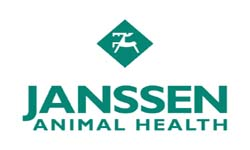
Now is the right time for sheep farmers to avoid the serious consequences of coccidiosis in their new lamb crops with a simple preventive treatment strategy. The same applies to cattle farmers with spring-calving herds.
The anticoccidial drench Vecoxan™, used on millions of lambs in the UK over the last eight years and contributing significantly to industry returns, was licensed last year for use in cattle and has already proved its commercial value.
Coccidiosis is caused by lambs and calves picking up oocysts (eggs) from pasture of the single-cell parasite Eimeria. Oocysts are shed by infected animals and can remain viable in pasture for up to two years.
The disease can severely damage the gut lining of lambs and calves. Losses can add up to £1,500 in a typical 300-ewe flock, mainly from increased mortality levels, but also from reduced growth rates, poorer feed conversion and the requirement for more feed in an attempt to get affected animals to contract weight.
With calves, growth rates in a herd can be badly stunted, some by as much as 20 per cent. Calves exposed to coccidiosis are more susceptible to other diseases such as pneumonia, and severely affected calves may die.
Often by the time farmers see signs of the infection it is usually well advanced, and the young animals will already have suffered high levels of gut damage.
The objective is to treat 'at risk' lambs and calves before they show clinical signs of the disease. All lambs in affected flocks should receive a single dose of Vecoxan at four to six weeks of age. This will stop oocyst production for up to 14 days, giving their immune system time to develop protective levels and prevent further outbreaks.
With calves, coccidiosis often occurs at a time of stress. All calves in a group should receive a single dose about two weeks after they have been exposed to a stress period – being moved, for example – and when on pasture or bedding likely to be contaminated with oocysts. Treatment with one dose of Vecoxan has been shown to improve average weight gain by up to 20 per cent.
This strategy also reduces oocyst excretion by 98 per cent by lambs and calves, dramatically cutting pasture contamination.
Lambs and calves should receive 1ml Vecoxan per 2.5 kg bodyweight. For advice on coccidiosis and its treatment telephone Janssen Animal Health on 01494 567555.
